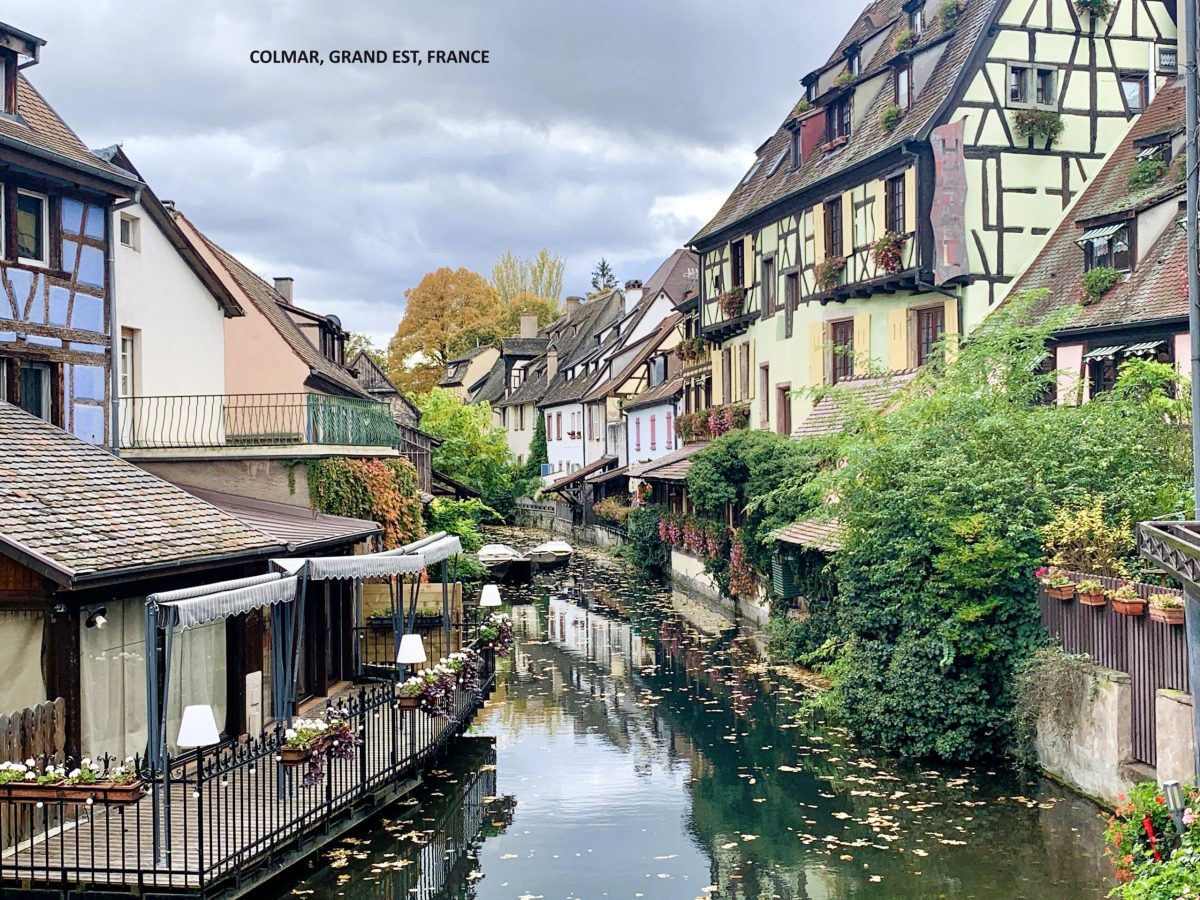Vanya suggested Le Bec-Hellouin as a place to stop at for lunch on our way north from Alencon to Yport. Le Bec-Hellouin was recently voted a “plus beau village de France” (and is fully deserving of the title) but, otherwise, it is most famous for it’s large abbey complex.
The Bec-Hellouin Abbey was founded in 1034 by a former Norman knight by the name of Herluin who had renounced violence and become a Benedictine monk. Sometimes referred to as Saint Herluin (despite not being canonised) Herluin was a fascinating character who inspired various distinguished ecclesiastics (including two early Archbishops of Canterbury; Lanfranc de Pavia and Anselm d’Aostein) and created one of the most influential abbeys in the Christian World. Herluin died in 1078 and his remains can be seen in the new Abbey Church.
The Abbey complex is now wholly owned by the French State and the Abbey is better known these days for the pottery it produces but a community of Benedictine monks do still practise monasticism there.
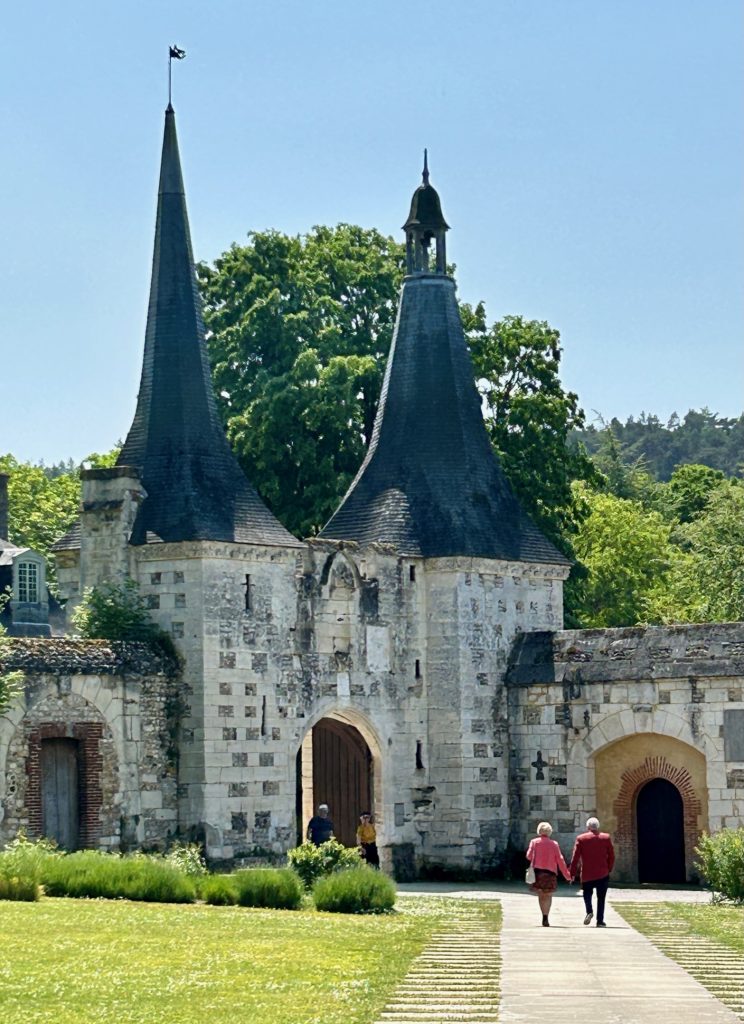
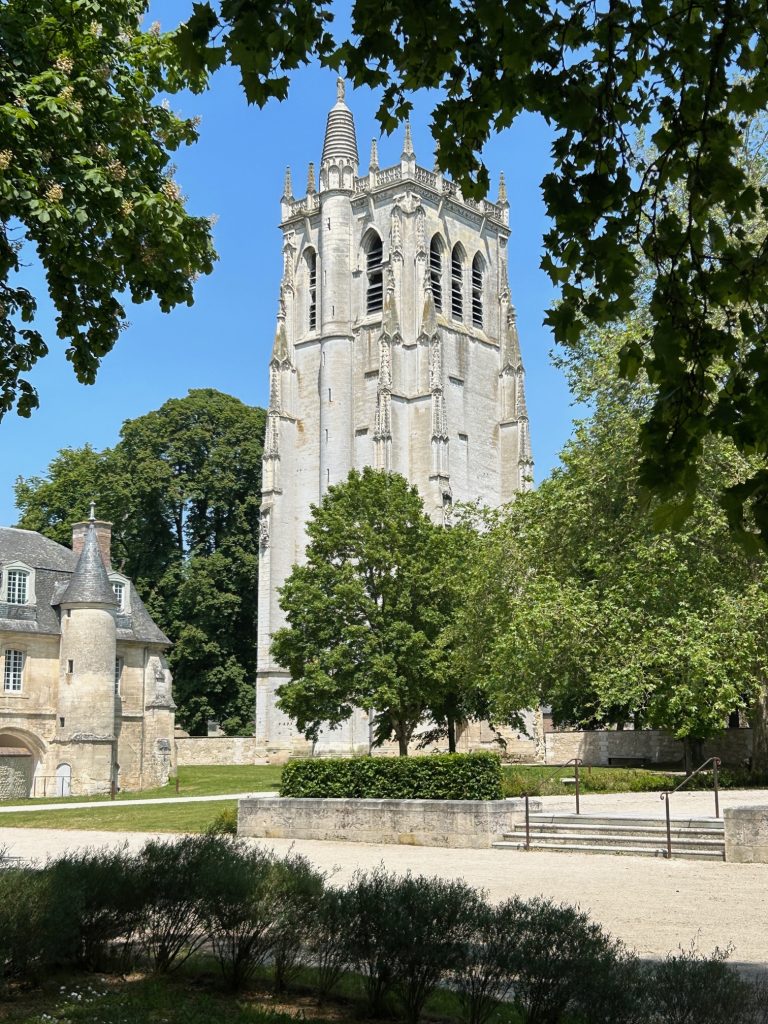
Left: The primary entrance into the abbey complex from Place de L’Abbe Herluin and Right: The 15th century Bell Tower of St Nicolas.
The 15th century Tour St Nicolas (the Bell Tower of St Nicholas) is the oldest part of the abbey still standing. Some considerable damage was caused to the original Abbey throughout the 100 years war between the English and the French (the village of Bec-Hellouin changed hands many times during that period) and again during both the French Religious Wars and the French Revolution.
In 1948 the surviving buildings were occupied by a community of Olivetan Benedictine monks who with government money have since restored them. In 1959, the remains of Herluin were reburied in the new Abbey Church.
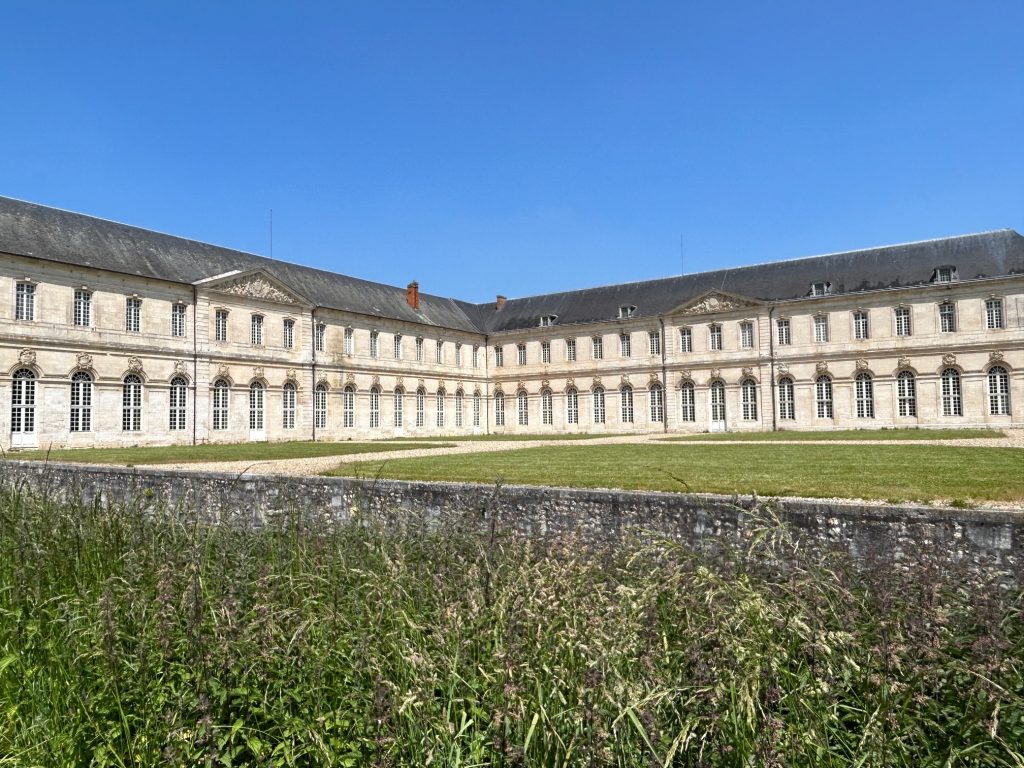
Much of the existing complex was rebuilt in a Regency style. The old refectory (the wing on the left of the photo) is now home to the Abbey Church.
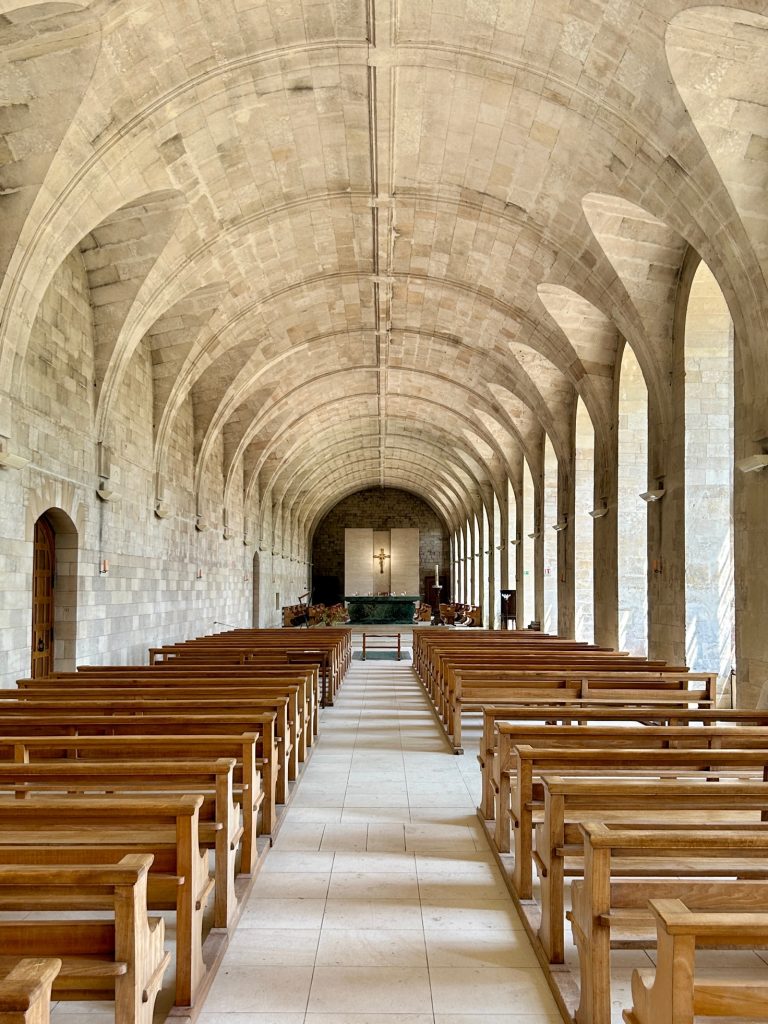
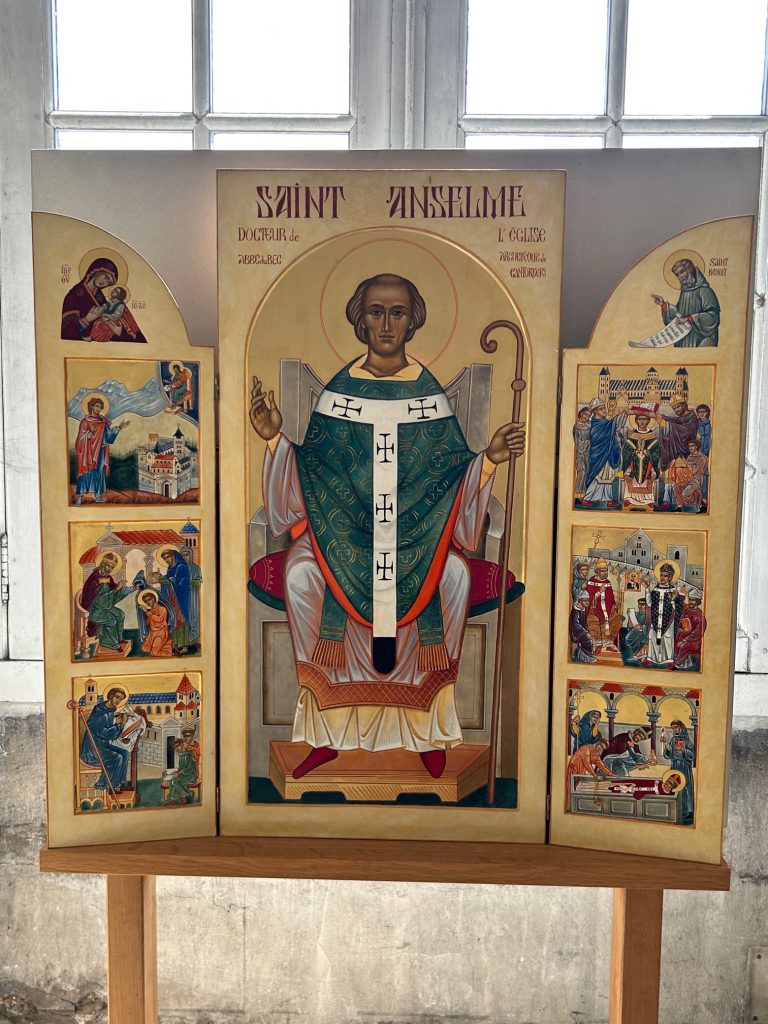
The inside of the abbey church, best described as ‘simply beautiful’, holds Heluin’s relics.
The village of Bec-Hellouin is tiny (just 402 inhabitants) but, it comprises a number of very pretty rows of pastel coloured half timbered houses, all in fine condition. For the most part these houses are gathered around two main squares, the Place de L’Abbe Herluin and the Place Mathilde where the village Church of Saint Andrew (Eglise Saint Andre) is located. The Place Mathilde is so named because William the Conqueror’s wife, Mathilde, was initially buried in the grounds of this particular St Andrew’s (until moved to the Abbey in Caen).

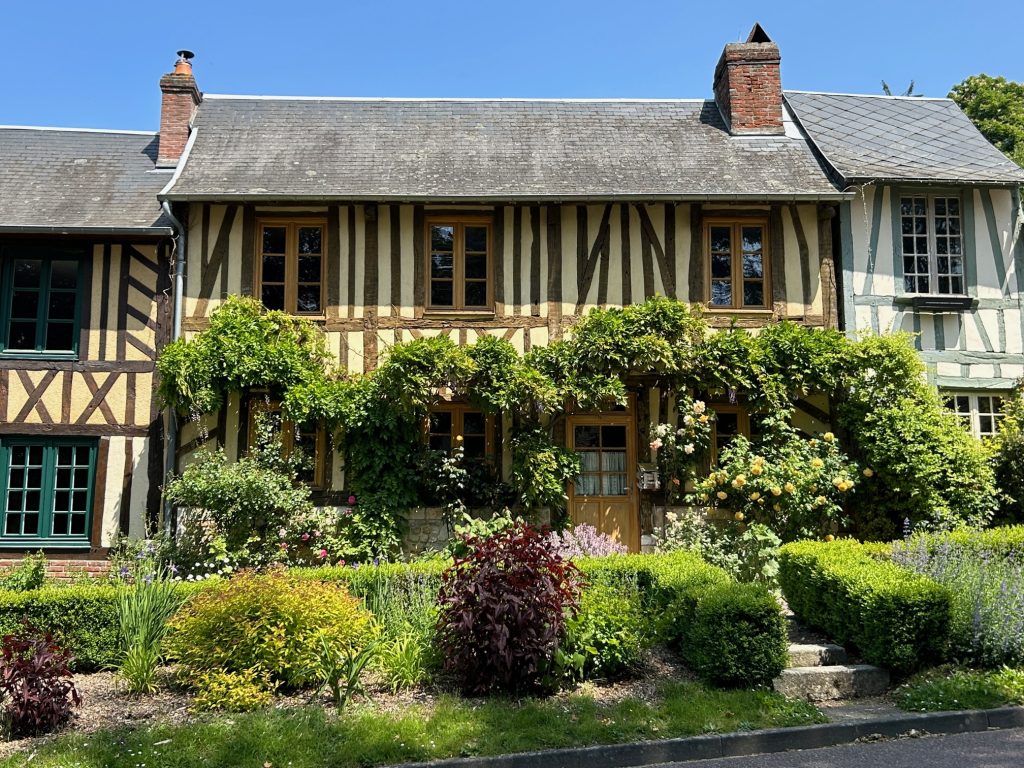
It didn’t take long to wander the village and we soon found a table outside ‘La Crepe dans Le Bec’ where we each enjoyed a buckwheat galette and I was able to sup an ice cold glass of the local cider. There’s nothing like a local cider on a warm sunny day in Normandy.
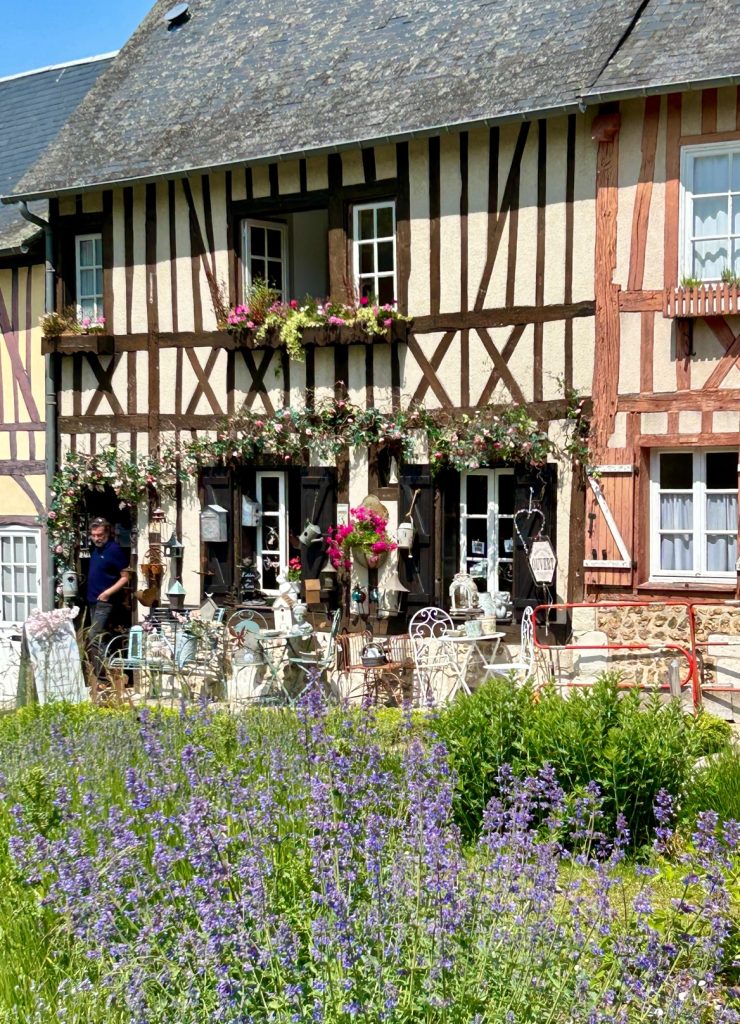
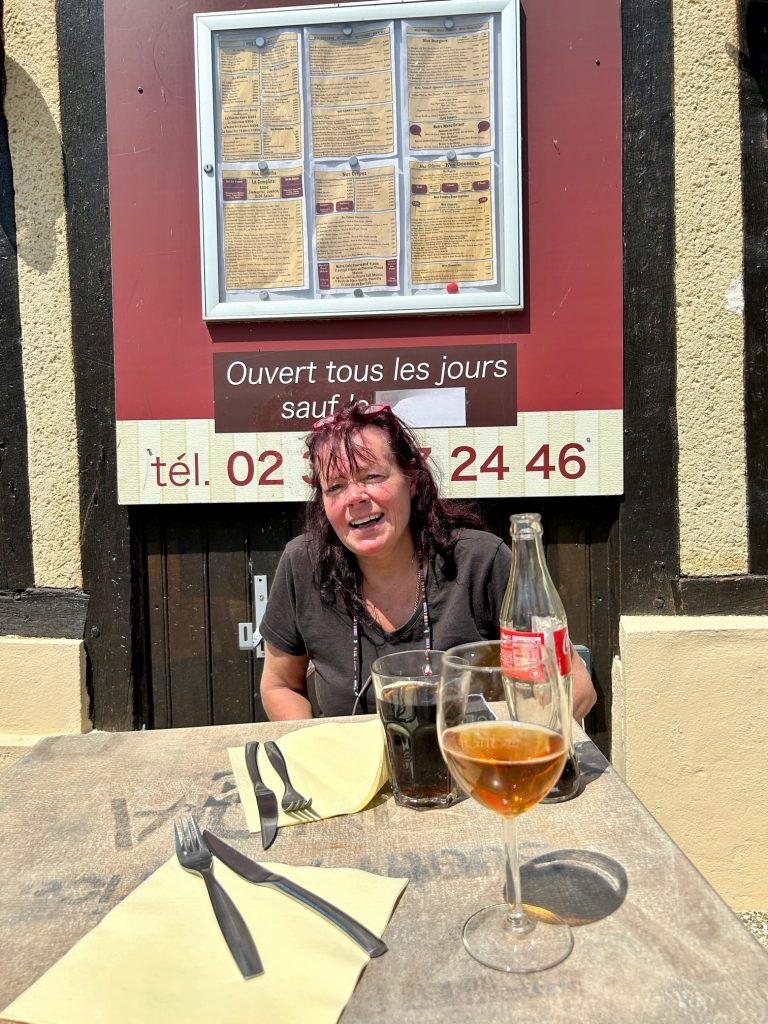
Awaiting galettes outside a creperie on the Place de l’Abbe Herluin.
Just one piece of interesting news I learned while in Le Bec Hellouin. The London suburb of Tooting Bec (where Del & Rodney Trotter lived before they became millionaires) was so named because the Abbey owned all the land on which the original village of Tooting stood. Now, not many people know that.
On to Yport.

